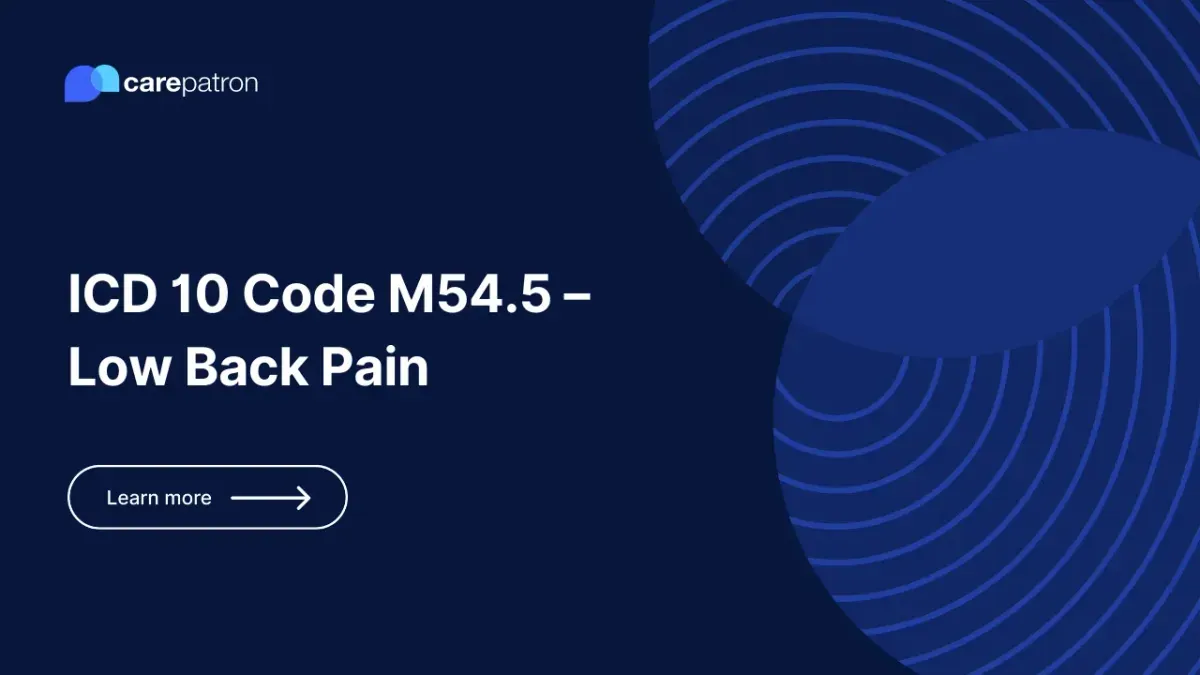
M54.5 – Low Back Pain
Learn more about the ICD-10-CM code M54.5 for low back pain, including clinical information, synonyms, related codes, and frequently asked questions.
Use Code
Commonly asked questions
Acute low back pain is sudden and usually resolves within a few weeks, while chronic low back pain persists for at least three months or recurs frequently.
No. However, the more specific codes can be used for such claims.
Maintaining good posture, staying active, incorporating regular stretching, practicing proper lifting techniques, and maintaining a healthy weight can help prevent low back pain.
EHR and practice management software
Get started for free
*No credit card required
Free
$0/usd
Unlimited clients
Telehealth
1GB of storage
Client portal text
Automated billing and online payments
